
Tearing myself to pieces
Tags
B&W
Black and White
Cool
Halloween
Holidays
Mood
Scary
Skeletons
Skull
Jersey City
New Jersey
United States
Nikon D300
35 mm f/1.8
Harsimus Cove

Tearing myself to pieces
Tags
B&W
Black and White
Cool
Halloween
Holidays
Mood
Scary
Skeletons
Skull
Jersey City
New Jersey
United States
Nikon D300
35 mm f/1.8
Harsimus Cove

NWC34 | Fannish Fetish Fashion Show 75
The audience choice best outfit competition.
Tags
Hilton
Doubletree Seattle Airport
Doubletree
EOS-1D Mark III
SeaTac
Canon
Panels and Events
Washington
nwc34
Convention
USA
Norwescon 34
Norwescon
Fannish Fetish Fashion Show
Hotel
fetish fashion, fashion show ebook download, 40mm, 4l, 1d, audience, seattle

Maman
Tags
Maman
Mam
Mom
araa
spider
sculpture
art
arte
Louise
Bourgeois
Guggenheim
museum
museo
Bilbao
Vizcaya
Bizkaia
Euskadi
Pas
Vasco
Espaa
Spain
gente

Prague
Location : Europe - Czech republic - Praha
Date : April 2011
Please don't use this image on websites, blogs or other media without my explicit permission.
© kader Lagraa.
All rights reserved
Tags
Europe
Czech
republic
Praha
prague
eastenr
east
capital
visiter
discover
amazing
tourism
travel
destination
gothic
city
architecture
bridge
sunset
gold
yellow
red
old
charming
view
woods
canal
light
dark
beautiful
seascape
share
photography
shot
photo
picture
image
nikon
d700
1635
mm
vr
nikkor
kader
lagraa
k.lagraa
abdelkader
explicit permission, d700, czech republic, kader, europe

Extraction
Todos los derechos reservados - All rights reserved
Copyright © Ivn Alpera
Esta fotografa ha sido realizada bajo un solo disparo, no est realizada mediante ninguna tcnica hdr o utilizando varios disparos.
This photograph has been performed for a single shot, is not effected by any technique HDR or using multiple shooting .
Tags
niebla
fog
agua
water
rocas
rocks
stones
piedras
mar
sea
torrevieja
alicante
lights
nubes
clouds
canon
eos
450d
18
55
is
stabilized
single shot, hdr, photograph

Sunset | New York
Tags
NY
USA
NYC
Manhattan
sunset
blue
blau
reflection
glas
glass
spiegelung
farben
orange
sun
sonne
canon
april

From the Saddle
Tags
Lishman
Chris Lishman
Canon
UK
Dunstanburgh
Dunstanburgh Castle
Northumberland
Coast
Seascape
Landscape
Coastal
Castle
Sunrise
Dawn
Sea

View from Chamonix, in France.
Tags
alps
chamonix
cliff
cloudscape
day
europe
france
high
hiking
landscape
mountain
mountains
nature
outdoors
peak
range
resort
ski
snow
sun
wind
winter
chamonix, mountains

ISTANBUL by Wolfgang Wildner
ISTANBUL, turkey,
by Wolfgang Wildner
Tags
Istanbul
Trkei
Trkiye
Turkey
Trkiye Cumhuriyeti
Islam
Foto
Photo
Bild
Moschee
Konstantinopel
Byzanz
Mosque
Bosporus
Goldenes Horn
Stadt
City
Metropole
Megacity
Asien
Europa
Asia
Europe
Konglomerat
Schmelztiegel
Osmanen
Osmanisches Reich
Muster
Pattern
Ornament
Osman Empire
Moslems
Muslime
Kunst
Art
Smog
Architektur
Architecture
Umwelt
Weltkulturerbe
Cultural Heritage
Klima
Climate
Wildner
Wolfgang Wildner
Weltstadt
wolfgang, istanbul, turkey
![[1009soccer]](http://si.wsj.net/public/resources/images/OB-QA635_1009so_G_20111009110557.jpg) Reuters
Reuters
South Africa's soccer players celebrate after their 2012 African Nations Cup Group G qualifying soccer match against Sierra Leone on Saturday. They were under the mistaken impression that they'd qualified for the Cup of Nations with a 0-0 draw.
Imagine March Madness without Duke, North Carolina, Kentucky, UCLA and UConn. Not quite the same thing, is it?
A similar handicapper's nightmare is playing itself out in Africa. The Cup of Nations, a biennial continental competition for African national teams set to kick off in late January, will do so without most of its traditional powers after a qualifying tournament marked by a beyond bizarre series of upsets. Of the six African teams who qualified for the 2010 World Cup, just two – Ghana and Ivory Coast – have booked their tickets to Equatorial Guinea and Gabon, co-hosts of the 2012 Cup of Nations.
The topsy-turvy field could pave the way for Ivory Coast and Ghana, likely uber-favorites come January, to run the table on their way to the final. But it could also signal a permanent shift in the balance of power toward a more level playing field, one which could be mirrored in other parts of the world.
First, the casualties: Egypt, winner of the past three tournaments (and seven overall, more than any other nation), will be watching on TV, having finished last in its qualifying group, a result so disappointing that the Egyptian FA thought way outside the box, appointing former Team USA coach Bob Bradley to lead the Pharaohs. Indeed, of the 10 African nations who were highest in the FIFA rankings when qualifying began just over a year ago, just five actually managed to secure a spot.
Saturday, the final day of qualifying in most of the 11 groups, proved to be as dramatic as you would expect, with familiar do-or-die scenario. Take Nigeria, the continent's most populous nation and an exceptional producer of soccer talent: among non-European countries, only Brazil and Argentina export more players to Europe. Thanks to the Nigerian diaspora, fans of the Super Eagles are everywhere, a bit like Red Sox Nation.
And, like the Sox on the final day of this year's regular season in Major League Baseball, Nigeria stumbled at the final hurdle. It went into Saturday's home clash with Guinea needing to win either 1-0 or by two goals. It twice took the lead in a nervy match in the capital, Abuja. But a goal deep in injury time by Ibrahima Traore clinched qualification for Guinea. Such was the sense of disappointment that, less than 24 hours later, the Nigerian FA announced an official inquest into the failure to qualify, one that could yet result in coach Samson Siasia going the way of Terry Francona.
If that sounds cruel, it's nothing compared to what South Africa went through. Going into the final group game against Sierra Leone, Bafana Bafana was second, one point behind Niger and tied with Sierra Leone. With news filtering through that Niger was losing in Cairo, South Africa – which had the best overall goal difference in the group – appeared to change its game plan during the match, playing more defensively to preserve the 0-0 draw, knowing that if the results stood, it would finish tied for the group lead in Group G with Niger and Sierra Leone, but with a better overall goal difference (+2, compared to Niger's -2 and Sierra Leone's 0). And so the players celebrated their scoreless draw at the final whistle, jubilantly doing a lap of honor in front of their fans. Except they had failed to read the fine print. When teams finish equal on points in this year's Cup of Nations, the first tiebreaker isn't overall goal difference, but head-to-head results. And those favored Niger.
All told, it has been a nightmarish qualifying campaign for the continent's traditional powerhouses, with the exception of Ivory Coat and Ghana. Some of this can be explained away by a qualifying system that exacts a hefty price for early slip-ups. Cameroon, held to a tie at home by the Democratic Republic of Congo and beaten away by Senegal in its second and third games, is an example of this.
Some of it comes down to generational change. Certainly this is the case with Egypt, where a group of very talented players and their long-time, legendary coach, Hassan Shehata, seemed to grow stale all of a sudden. Which is why they took a leap of faith with Bradley, the first American-born-and-bred coach to take charge of a major soccer power outside North America.
But much of it stems from the rest of the continent catching up to the elite teams of West Africa and North Africa, who have long dominated the competition, winning 17 of the last 18 African Cups of Nations, dating back to the mid-1970s. (The one interloper was South Africa, which triumphed in 1996).
Tiny Botswana, with a population of just over 2 million, and Niger, will be making their first-ever appearances at the Cup of Nations (the second-oldest continental national team tournament in the world, after the Copa America). So too – albeit as an automatically qualifying co-host – will Equatorial Guinea. And, as of Sunday morning, Sudan and Libya, both ravaged by Civil War and with just one appearance each since the mid-1980s, was on the verge of qualifying.
The rest of the world has been taking about the supposed rise of African soccer for several decades. But what they really meant was the rise of the top teams in Africa competing with the best from South America and Europe. That has happened, at least to some degree.
Yet now Africa stands on the cusp of having true strength in depth across the continent, rather than pockets of excellence. That can only bode well for the future. And while it may be too early to definitively state that it's a world-wide trend, it stands to reason that as nations develop, the competitive advantage in terms of know-how, resources and infrastructure the traditional powers once enjoyed will be eroded over time. Which is why perhaps, unless you support one of the eliminated nations, it's not a tragedy that so many of the big boys won't be there this time around.
Gabriele Marcotti is the world soccer columnist for The Times of London and a regular broadcaster for the BBC. His column appears on Sundays.
african nations cup, team usa coach, duke north carolina, argentina export, soccer talent, continental competition, fifa rankings, europe thanks, march madness, bob bradley, coach bob, qualifying group, mistaken impression, ivory coast, populous nation, soccer players, former team, equatorial guinea, pharaohs, handicapper

A Biillbergia in a hanging basket
Tags
Bromeliaceae
Bromeliads
Bromeliad
garden
subtropical
Brisbane
Queensland
RIKUZENTAKATA, Japan—As the evening light drained from the sky, Rinnosuke Yoshida hurled one last pitch across the dusty practice field—a refuge amid the piles of debris left behind by the tsunami in March.
![[RUIN_logo]](http://si.wsj.net/public/resources/images/P1-BC990_RUIN_l_D_20111014224805.jpg)
A 15-year-old local baseball star who aspires to play in college and one day turn pro, Rinnosuke spends his free time training—lifting weights and trying to perfect his swing—and grappling with the biggest decision of his life so far: to stay here or move to a bigger city inland to play high school baseball.
Japan's Field of Dreams
View Slideshow
![[SB10001424052970203914304576631300457090900]](http://s.wsj.net/public/resources/images/OB-QC801_1014jb_D_20111014152006.jpg)
Ko Sasaki for The Wall Street Journal
A Yonesaki Middle School player was at bat during a June 18 game against Setamai Middle School.
Rikuzentakata's Struggle
View Interactive

Complete Coverage: Ruin and Rebirth
It is a choice he will have to make without the guidance of the person whose counsel he wants the most.
"My dad always used to give me advice on baseball and what to do next. I don't have that anymore," he said. "I think that's what I miss the most."
Rinnosuke's father, Toshiyuki Yoshida, was dragged off by the swirling black waters that ravaged this coastal community on March 11. His body still hasn't been found. Rinnosuke and his family now are contemplating a future far different from the one they once imagined.
Almost 20,000 people across Japan were lost within minutes to the massive earthquake and tsunami it spawned. In Rikuzentakata, nearly 2,000 of this city's 23,000 residents were torn away by the rampaging ocean, including more than 40 volunteer firefighters and a host of city workers, politicians and business leaders.
The waves took people like Mr. Yoshida, a civic-minded Rikuzentakata native who worked at a small-business association and was actively involved in the community. He belonged to the local fire brigade. And he was passionate about baseball, the American sport transplanted to Japan in the late 1800s. For 14 years, he coached the team at the middle school he had attended as a boy and where his younger son is still a student.
Japan Real Time
Baseball Redemption and Funding Struggles
Six Months Later, Rebuilding Eludes Town
A Hospital's Fight
Seven months after the disaster, survivors are still struggling to mend the holes ripped in Rikuzentakata's social fabric by so many deaths. They are searching for replacements to run the city's companies, operate its government, save its cultural institutions and nurture its sports teams.
In many ways, the human rebuilding is a tougher challenge than the physical reconstruction of Rikuzentakata and other cities like it on Japan's northeast coast.
"With enough money, infrastructure can be replaced. For people, of course, it's not that easy," said Futoshi Toba, Rikuzentakata's mayor, whose wife, Kumi, is among the dead. "The community needs to work together so the thoughts and ideas of the people who passed away can be carried on."
As U.S. baseball fans focus on next week's World Series, the sport is playing a critical role in sustaining the family Mr. Yoshida left behind in Japan: his wife, 41-year-old Kazue, and two sons Rinnosuke and Shinnosuke,16.
Both boys are obsessed with baseball. Rinnosuke, a pitcher at Yonesaki Middle School, played this fall on a regional all-star team. Shinnosuke is a catcher and vice captain at Takata High School.
Yuta Niinuma, one of Mr. Yoshida's former protégés and a pitcher, is an assistant coach at the middle school and has become a mentor to the boys, especially Rinnosuke. He works with them in between his shifts at a local poultry processing plant.
"It's a way to pay back what his father taught me," said Mr. Niinuma.
High school baseball is a big deal in Japan. It commands the sort of attention and fan loyalty that high school football does in Texas and some other parts of the U.S. Glossy magazines in Japan are devoted to following school-boy ball players. The best are recruited straight to the major leagues.
The sport has long been important in Rikuzentakata. One of the city's proudest moments was when Takata High went all the way to the national championship tournament outside Osaka in the summer of 1988—Ms. Yoshida's senior year. Hundreds of fans turn up for the team's big games.
"I've been playing baseball since before I can remember," said Shinnosuke. His father, who played outfield in high school and bragged about his base-stealing prowess, dressed his sons up in baseball uniforms for photos when they were still toddlers.
Shinnosuke joined his elementary school team when he was 9 and Rinnosuke became determined to play like his big brother. His parents bought Rinnosuke his first glove for his 7th birthday.
Mr. Yoshida, who taught his boys the basics of batting and fielding in the backyard, was a stickler for form. When Rinnosuke developed a habit of throwing side arm, his father had him sit straight-backed in a chair for hours, gripping a baseball in his right hand and lifting his arm, elbow first, so that he could learn the proper motion and avoid injury later.
When they weren't practicing with the team, father and son would head over to the middle school diamond. Mr. Yoshida would squat behind home plate, catching pitch after pitch and giving his son pointers. Rinnosuke would often throw 90 pitches in a session.
"When I would get tense, he would tell me to relax more," Rinnosuke said.
As an assistant coach, Mr. Yoshida was known for his keen sense of humor and motivational comments. The head coach, Seiji Yoshida (no relation), said Mr. Yoshida played "good cop" to his "bad cop."
When the tsunami hit that Friday afternoon, Mr. Yoshida, 43 years old at the time, was downtown for work and raced to help people climb to safety on the roof of City Hall. Witnesses later said that after guiding some older residents up the stairs, he headed back down to rescue stragglers. He hasn't been seen since.
In the chaos after the disaster, Mrs. Yoshida, a city employee, was drafted for emergency relief work. The boys waited for their father to come home, or report for duty at the fire station. When he didn't turn up after three days, they went with their grandfather to search for him.
They made the rounds of all the evacuation centers but Mr. Yoshida's name was nowhere to be found. With dread, the three went to the gymnasium at Rinnosuke's school, which had been turned into a makeshift morgue.
The boys were told to wait outside. Mr. Yoshida's father went in alone to look at the mud-covered corpses laid out on the floor. His son wasn't among them.
"Because my dad is the kind of person he is, when he didn't come home, I was already guessing what happened," said Shinnosuke. "My grandparents took it really hard."
The family didn't hold a funeral. As the months went by, they tried to return to the rhythms of daily life.
At first, the boys said, it wasn't clear whether they would play baseball again. Their town lay in ruins and their father was gone.
Lying in bed at night after the disaster, Rinnosuke would sometimes sob, asking his grandparents who would teach him baseball now.
Word of his quandary made it to Mr. Niinuma, who was coaching at the middle school. "When I heard that, I thought that was something I could do. I could teach him about pitching," Mr. Niinuma said.
Mr. Yoshida started coaching at Yonesaki Middle School when Mr. Niinuma, now 28, was a student and a promising pitcher there. "He used to tell me not to over-think everything, every play, every move, but to listen to my gut," Mr. Niinuma said.
School eventually started again in May, and with it, baseball practice.
Yonesaki Middle School's baseball field had become home to temporary housing for residents displaced in the tsunami. So the baseball team scrounged for places to play. It took buses to diamonds in neighboring towns. Yonesaki's kids spent time preparing for a regional summer tournament on a playing field surrounded by debris. A beached fishing boat sat among smashed concrete and tangled steel beyond the outfield.
Mr. Niinuma began spending more time with Rinnosuke after practice. They played catch and hung out. To help Rinnosuke get more power into his pitches, Mr. Niinuma had him change his motion to focus his mind on the transfer of weight from his back leg to his front as he throws the ball. Now, Rinnosuke bends his back knee and exaggerates his windup before hurling the ball.
Sometimes, Mr. Niinuma, who lives with his wife nearby, would spend the night at the Yoshidas' house. He was wary of broaching the subject of Mr. Yoshida's death directly with Rinnosuke.
"I felt that if I consoled him, it would make things worse," he said in May. "I don't want to overprotect him, to keep asking him how he's doing."
At the first game of the middle school summer tournament—in his first at bat—Rinnosuke smacked a double deep into center field, driving in a run.
But when his team took the field, and Rinnosuke, the starting pitcher, made his way to the mound, jitters got the best of him. He walked the first batter. He gave up two hits. Then he threw a wild pitch. By the end of the inning, Yonesaki's early lead was gone and the score was tied 3-3.
For the next few innings, control see-sawed between Yonesaki and the team from Setamai Middle School in the neighboring town of Sumita.
"During the tough moments, I kept thinking about my dad. I felt like he was there with me," Rinnosuke said.
Then, in the bottom of the sixth, things fell apart. With one out and the bases loaded, Rinnosuke threw a pitch. The batter hit a triple to right field. Three runs scored. The game ended 9-5.
Outside the stadium afterward, Rinnosuke broke down. One hand against the concrete wall, the other holding a towel to his face, he cried inconsolably for 30 minutes.
"If I'd been able to hold them, we could have won," Rinnosuke said later. "I was really sad that I couldn't pay back all the people who supported me after the disaster. And I cried for my dad."
In the months that followed, Mr. Niinuma kept working with Rinnosuke to help rebuild his confidence.
As Mr. Niinuma's presence in Rinnosuke's life has grown, so has his influence. After Mr. Niinuma graduated from Yonesaki Middle School in the late 1990s, he left Rikuzentakata for a high school in the bigger inland city of Ichinoseki to improve his baseball prospects.
Mr. Niinuma ended up pitching at Fuji University, about 90 minutes from Rikuzentakata. Mr. Yoshida and his young family used to go and watch his games.
As the school year wore on, Rinnosuke began to seek Mr. Niinuma's advice on the strengths and weaknesses of various high school baseball teams. Going to a school with a better baseball program would mean better coaches and more advanced training. But it would also mean more competition for playing time. It would also involve moving away from home—and potentially leaving his mother all alone, since Shinnosuke will soon be going to college.
In late August, over bowls of steaming ramen noodles at one of the few local restaurants back in operation, Mr. Niinuma discussed an option with Rinnosuke: Ichinoseki Gakuin High School, a private school in the same city where Mr. Niinuma had studied, about two hours away. The team went to the national championships last year.
"I told him if he goes, he will improve as a player," said Mr. Niinuma. "He will also make connections and meet new people. It's good for many reasons."
While Rinnosuke mulled his decision, the family continued to struggle with their loss. Mrs. Yoshida couldn't bring herself to file the papers to have Mr. Yoshida declared dead. Shinnosuke largely kept his feelings to himself. The family said that they seldom talked about Mr. Yoshida's death directly.
Baseball helped them cope. Shinnosuke tasted success when Takata High School won four games to take second place in the autumn regionals and earn a berth in the prefectural championship tournament, where they lost in the second round.
Shinnosuke turned into an important leader for the team, working closely with its pitchers and keeping the players on the bench motivated.
"He's somebody I can trust," said Akishi Sasaki, the Takata High manager. "He can see the game as a whole. He's very smart. The team can't do without him."
Shinnosuke said he is determined to stick with baseball and his studies. After he graduates from Takata High, he wants to go to the prefectural capital, Morioka, for university and eventually settle back in Rikuzentakata.
Mrs. Yoshida said that she appreciates all the support that Mr. Niinuma has given to her sons. And if Rinnosuke decides on Ichinoseki, she will do her best to send him there.
But if he doesn't win a scholarship, the tuition will be expensive. And she worries how he will cope with living on his own, far from home.
"I think if his dad were still here, I wouldn't be so worried about his going away," said Mrs. Yoshida. "In my heart, I hope he decides to stay home and go to high school with his brother."
Rinnosuke still isn't sure what to do. He said his heart—and his mind —are divided, 50-50.
On the one hand, going to Ichinoseki, with its more competitive program and tougher practice regimen, would likely help him improve faster as a player, and give him exposure to the world beyond Rikuzentakata. On the other, he said, he doesn't want to turn his back on his mother, his hometown and its team.
"If Takata High can win and bring attention to the city, we can repay all the people who have supported us," Rinnosuke said. "Baseball could help bring things back to the community."
—Hitoshi Koreeda contributed to this article.
Write to Gordon Fairclough at gordon.fairclough@wsj.com
Online.wsj.com

Mementos and Recuerdos
Just my recent wanderings. Some old edits, some very recent... :) but all newly edited at the very least, (if edited)!
Tags
eeuu
iphone
digital
usa
interesting
iphoneography
photography
random
photo
photos
fotos
arte
foto
pretty
bonita
art
interesante
dionneashley
fotografa
landscape
deeashley
gogoloopie
verano
unique
variety
vista
paisaje
scenic
hdr
cameraphone
mobile phone
mementos, wanderings

Kendama
I spent some quality time in the studio this morning shooting for a small product assignment for my Commercial Photo class.
Lighting set up:
2 Profoto 1200 packs powering 4 lights triggered by Pocket Wizards.
Lights:
1. D4 head shot through gel onto black paper backdrop for glow.
2. D4 in Small Softbox boomed above and forward of subject for main light.
3&4. 2 D4's off frame left and right shot through snoots for edge lights.
Tags
Kendama
KendamaUSA
USA
WI
Wisconsin
Green
Gel
Toy
Japanese
Studio
Commercial
Photography
Photo
Black Plexiglass
Profoto
1200w
D4
Strobes
PW's
PW
Pocket Wizards
Nikon
Nikon D700
Nikkor 60mm AF Micro
4 light set up
Rosco
Gels
Madison
Wood
Ball and Cup
Product
Table Top
micro4, snoots, photo class, commercial photo, softbox, d4, quality time, backdrop, wizards, amp, lighting
MANNHEIM, Germany—German economic expectations deteriorated to approach a three-year low in October as analysts fear that the European-debt crisis will put a brake on the country's economy and may drive it into a slight recession in the next six months, the Center for European Economic Research, also known as ZEW, said Tuesday.
Enlarge Image

Close

The widely watched ZEW index fell for the eighth consecutive month to minus 48.3 from September's reading of minus 43.3. The level was last this low in November 2008, after collapse of Lehman Brothers amplified the global financial crisis.
Fears the debt crisis will cause governments and households to rein in spending and companies to postpone investments drove the index lower this month, ZEW expert Michael Schröder said. But he said confidence could improve fast "if we see a solution to the euro zone's problems."
European leaders are working on new crisis-fighting measures they hope to present at a summit on Sunday. But Germany has cautioned against expecting a "definitive solution" this weekend. Experts polled by ZEW expect Germany's economy to contract slightly in the fourth quarter of this year and the first quarter of next year.
"October's decline in the German ZEW index provides further evidence that Germany is being hit hard by deteriorating export prospects and the euro-zone debt crisis," said European economist Ben May at Capital Economics in London. Other recent data also supports that the "German recovery is all but over," he said.
Berenberg senior economist Christian Schultz said the recession could be deeper and longer in the absence of a solution to the debt woes. "In the end the European Central Bank might be required to step in and credibly avert any market panic before confidence and growth can return in the euro zone."
ZEW surveyed 271 analysts and institutional investors. More expect the ECB to cut interest rates but they are still in the minority, Mr. Schröder added.
Half the respondents expect rates to remain steady in the next six months, down from about 70% the previous month while 37% of the respondents expect lower rates, versus 20% a month earlier.
The current conditions index fell to 38.4 from September's 43.6, which was the lowest reading since July last year. Experts had forecast a reading of 39.6 for October.
Write to Margit Feher at margit.feher@dowjones.com
debt woes, global financial crisis, export prospects, mannheim germany, christian schultz, lehman brothers, market panic, economic expectations, definitive solution, debt crisis, institutional investors, euro zone, european leaders, ecb, economic research, recession online, fourth quarter, collapse, respondents, economist
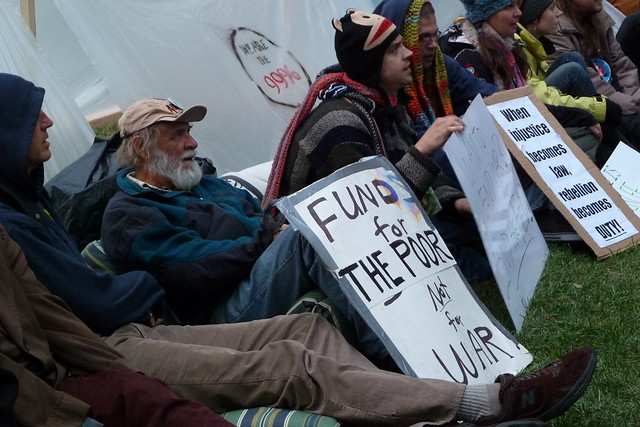
P1000532 - Funds For The Poor Not For War - OccupyMN Tent Site on the South Plaza
Occupy Minnesota demonstrators set up tents on the south plaza of the Hennepin County Government Center in downtown Minneapolis on Saturday, October 15, 2011.
Hennepin County Sheriff's officers removed the tents at about 1:30am Sunday morning. There were no arrests.
Tags
hennepin county
government center
south plaza
#ows
#occupymn
#occupy
occupywallstreet
occupyeverything
minneapolis
minnesota
usa
america
american
protests
government plaza
hennepin county government center, hennepin county government, county government center, downtown minneapolis, tent site, ows, demonstrators, county sheriff, tents, sunday morning
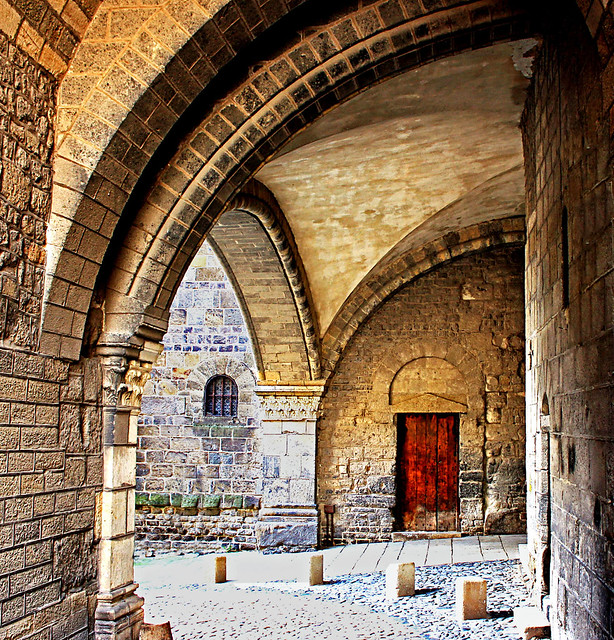
Le Puy cathedral (detail)
Tags
le puy
Haute-Loire
auvergne
french
vintage
photography
France
europe
travel
fond d'cran
wallpaper
ville
town
city
cit
architecture
photo
francia
frankreich
light
photographie
shot
geotagged
color
colour
couleur
typical
ancient
lumire
Canon
street
rue
day
spring
journe
printemps
exbr
style
mur
wall
cathedral
church
glise
cathdrale
religion
faith
art
history
histoire
foi
heritage
stone
pierre
arch
vote
detail
![[COVER_BOTT]](http://si.wsj.net/public/resources/images/WK-AS986_COVER__F_20100225155209.jpg) Andrew Burton for The Wall Street Journal
Andrew Burton for The Wall Street Journal
Torin Koos of the U.S. competes in the men's 4x10km relay race at Whistler Olympic Park this week during the Olympics.
VANCOUVER, British Columbia—Don't believe them when they tell you the Winter Olympics are all about courage, hard work, mental toughness and grace under pressure. There's only one quality that's universally worshipped here in Vancouver—going fast.
The heroes of these games, from Alpine skier Lindsey Vonn to speed skater Apolo Ohno and even figure-skater Kim Yu-na, all depend—to some extent—on the ability to move at a hair-raising pace. Speed is one of the elements that makes the Winter Games the jaw-dropping spectacle that it is (it's also the element that makes it dangerous: Georgian luger Nodar Kumaritashvili, who died in a training run just before the Games began, lost control of his sled at an estimated 90 miles per hour).

Olympics: Faster Than a Speeding... Zamboni?
1:28
Speed has been a dominant factor at these Winter Games. The Wall Street Journal equipped some reporters on the ground with a radar gun to track speed at events. WSJ's Bryan Gruley talks with Kelsey Hubbard about some of the surprising results.
The odd thing about the Olympics is that for all the stopwatches and television cameras trained on its events, raw speed isn't something that's consistently measured. We already know who the fastest Olympians are—a Canadian bobsledder took that prize at the Whistler Sliding Centre with a speed that wasn't too far from triple digits. High up there in the speed rankings were the downhill skiers, who reach speeds well into the 70s.
But what about everyone else?
To find out just how fast Winter Olympic events really are, we rented a Stalker Sport radar gun.
With one of these things, you don't have to listen to the "experts" tell you how fast Olympians are traveling. The gun doesn't lie.
What we found was more than a little interesting. Did you know curlers occasionally go over the speed limit of some gated communities in Florida? Did you know speed skaters go faster than snowboarders in a half pipe? Did you know cross-country skiers are faster than hockey players? We didn't either, until we figured out how to use the thing.
91 MPH: Women's Bobsled
![[RADAR1]](http://si.wsj.net/public/resources/images/WK-AT010_RADAR1_D_20100225165524.jpg) Getty Images
Getty Images
Kallie Humphries and Heather Moyse, Canada
59 MPH: Team Ski Jumping
![[RADAR2]](http://si.wsj.net/public/resources/images/WK-AT011A_RADAR_D_20100225165833.jpg) Bongarts/Getty Images
Bongarts/Getty Images
Thomas Morgenstern, Austria
54 MPH: Ski Cross
![[RADAR3]](http://si.wsj.net/public/resources/images/WK-AT012_RADAR3_D_20100225170832.jpg) The Canadian Press/Associated Press
The Canadian Press/Associated Press
Christopher Del Bosco, Canada
At a recent men's curling match, we had the pleasure to speak with a seasoned expert on radar guns: a Vancouver police officer, who first ribbed us for renting a Stalker, which, he said, wasn't the latest in radar technology. "Wait till I tell the guys back at the station you've got a Stalker," he laughed.
Steve Hocker, senior product manager for Applied Concepts, the Stalker's manufacturer, says that the Sport model is an older machine but was updated about two years ago. He says the technology, which uses Doppler radar, is accurate to within one mile per hour and is the best system for clocking sports.
Newer speed guns used by law enforcement have narrow beams that are good for clocking specific automobiles, he says, but are less adept at catching the speed of a pitcher's fastball or getting a reading on a skier whipping around gates on a slalom course. (The newer models also cost $2,800, about twice as much as the Stalker Sport).
So what did the gun tell us? Curling may be the slowest sport at the Winter Olympics, but it's not as pokey as you'd think. When someone is curling, they usually move somewhere around seven or eight mph, which is slower than the hockey referees we timed during stoppages of play. But when curlers want to knock a bunch of stones out of the way, they can slide along the ice at a furious 10 mph.
That's still slower than a Zamboni ice-cleaning machine, which we clocked at 11 mph, but just barely. Now we understand why this game got the Scottish so excited.
If curlers go 10 miles per hour, Olympic hockey players must go around 90, right? Wrong. While hockey players got up to roughly 20 miles an hour while back checking, most of the time they were cruising around the ice at a pedestrian 14 miles per hour. When Latvia's Kristaps Sotnieks took a pass on the blue line with a clear lane to the net during Friday's game against the Czech Republic, he reached a max of 16 mph before scoring. To put that in perspective: It's slightly slower than the cross-country skiers we clocked on the downhill portion of the course in Whistler, and about 35% slower than a women's short-track speed skater.
Most Olympic events are designed to reward consistency and precision. But if they changed the rules to award medals for the highest top speed achieved, Austria's Romed Baumann would have a medal. He finished fifth in men's giant slalom Tuesday, only a split second away from winning. During the final stretch of the run, however, we clocked him at 53 miles per hour, faster than any of the medalists that day.
China's Zhifeng Sun didn't technically win the women's halfpipe snowboard competition here in British Columbia. But maybe she should have: While other snowboarders were going down the halfpipe in the mid-to-high-20-mile-per-hour range, we clocked Ms. Sun at about 31 miles per hour, the fastest top speed our gun registered that evening.
So what does Ms. Sun get for pushing it harder than any of her competitors? Absolutely nothing.
The Radar Games
![[RadarPromo]](http://si.wsj.net/public/resources/images/OB-HR444_RadarP_D_20100225232642.jpg)
Click above to see a comparison of speeds for different events.
When Christopher Del Bosco of Canada qualified for the semifinals in men's ski cross, he was going faster than 54 miles per hour as he came over the final jump of the course. That was the fastest speed for any competitor that day, and it presaged good things for the Canadian. But Mr. Del Bosco was a little too fast in the finals. In place to win a bronze medal, he fell in the final stretch.
American speed skater Shani Davis wanted gold in the men's 1,500-meter competition, but Dutchman Mark Tuitert stole it away from him by a mere 0.53 second. Our speed gun, however, said Mr. Davis reached a top speed of 37 miles per hour—faster than Mr. Tuitert's peak of 35.3. That's gotta count for something, right?
If there's any unofficial speed record for the Winter Games, it was likely set in 1992 in Albertville, France, when the International Olympic Committee made speed skiing a demonstration sport. The object of the sport is pretty simple: Someone skis down a straight slope as fast as they can wearing aerodynamic gear. It's one of the fastest things humans can do without the help of an engine. In that event, the skiers went about 125 miles per hour, nearly 40% faster than the fastest lugers go. Why is this not the showcase Olympic event?
If you're looking for the slowest Olympic activity, we don't have a ready answer. We tried to take a reading while waiting in line for beer at Canada Hockey Place–but the pace was so slow it didn't register on the Stalker.
—Matthew Futterman and Phred Dvorak contributed to this article
Write to Reed Albergotti at reed.albergotti@wsj.com
Online.wsj.com
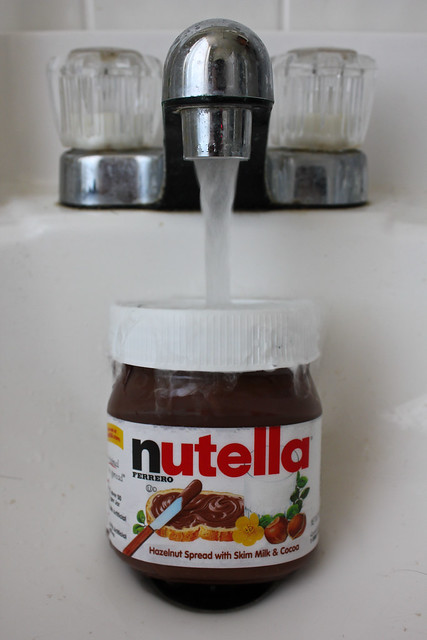
10/6/2011 - Day 4
Tags
30
days
nutella
photo
project
food
chocolate
hazelnut
spread
cocoa
ad
jar
sink
water
rinse
bathe

Perception
Tags
California
Cantor Arts Center
James David Smillie
Palo Alto
Simille
South Bay
Stanford
Stanford University
USA
United States
United States of America
painting

la place aux herbes Uzs
Tags
Uzes
french
vintage
trees
photography
France
europe
travel
fond d'cran
wallpaper
city
quiet
peaceful
silence
night
nuit
orange
reflets
reflections
architecture
beauty
ville
photo
history
francia
frankreich
light
photographie
shot
geotagged
color
colour
couleur
typical
beaut
ancient
Gard
lumire
medieval
duch
Canon
mystery
lights
stone
pierre
jaune
yellow
facade
buildings
place
square
arbres
exbr
Languedoc
Roussillon
colorful
colourful
color
bright
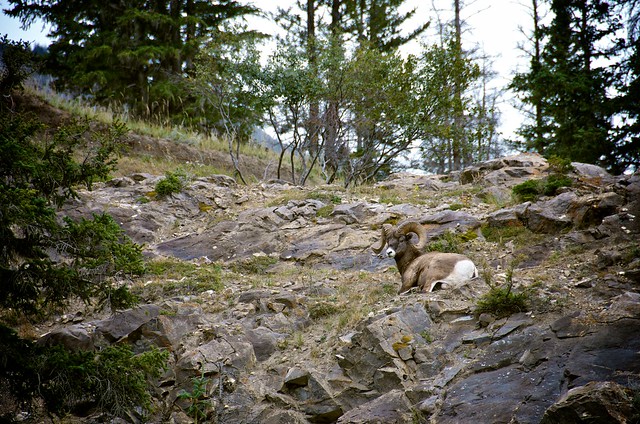
saw some bighorn sheep on our way into jasper national park. there were about ten female (ewe) in a pack on the road near the entrance, and two or three male (ram) on a mountain further in.
please view in lightbox
Tags
bighorn
sheep
male
ram
jasper
national
park
alberta
mountain
trees
green
brown
white
horns
rocks
grass
lynn
h
armstrong
lynnharmstrong
ingleside
long
sault
ontario
canada
south
stormont
geotagged
photo
photography
nikon
d7000
nikkor
af-s
dx
vr
zoom
18-200mm
f/3.5-5.6
if-ed
VRII
lens
aperture
mac
art
2011
camera
flickr
interesting
request
licence
getty
images
creative
commons
attribution
noderivs
jasper national park, bighorn sheep, ewe

0234 - San Francisco Pride Parade
Friend me on Facebook
Follow me on Twitter
Copyright © SamuelHTC photography. All Rights Reserved.
Please contact before use in any publication.
Tags
San Francisco
California
USA
US
San
Francisco
SF
Pride
Celebration
Parade
2011
Lesbian
Gay
Bisexual
Transgender
LGBT
GLBT
San Francisco Pride Celebration 2011
San Francisco Pride Parade 2011
San Francisco Pride Celebration
San Francisco Pride Parade
San Francisco Pride 2011
San Francisco Pride
SF Pride Celebration 2011
SF Pride Parade 2011
SF Pride Celebration
SF Pride Parade
SF Pride 2011
SF Pride
Pride Celebration 2011
Pride Parade 2011
Pride Celebration
Pride Parade
Pride 2011
Lesbian Gay Bisexual Transgender
san francisco pride, pride celebration, pride parade, bisexual transgender, photography

Bargam Dancing
Celebrating the Bargam New Testament dedication
Tags
Papua New Guinea
PNG
Madang
Province
Niugini
Bargam
Bible
dedication
WASHINGTON—Tunisia will remain a moderate nation after its elections, despite concerns abroad about rising Islamist political influence, its prime minister said in an interview on Thursday here, where he is appealing to U.S. officials for financial support.
Enlarge Image

Close

Agence France-Presse/Getty Images
Tunisian Prime Minister Beiji Caid Essebsi speaks during an event in Washington D.C. this week.
Tunisians head to the polls on Oct. 23 in the first free elections to emerge from the Arab spring democracy movement. More than 100 political parties are vying for the 217 seats in a constituent assembly that will rewrite the nation's constitution. Ennahda—a once-banned Islamist party—leads the pack.
Prime Minister Beji Caid Essebsi acknowledged a "big phobia" emerging outside the country about Ennahda gaining support. But he defended its place in the new democratic system, saying "no one speaks of such phobia when it comes to Likud in Israel, which is a religious party."
"We chose to be a democratic country, so we have to respect the democratic approach," he said. "The Tunisian experience will show to the world that Islam and democracy are not incompatible."
Mr. Essebsi is scheduled to meet with President Barack Obama on Friday as Tunisia aims to build a new government following the uprising that ousted President Zine el-Abidine Ben Ali in January. The revolution sparked a movement across the Arab world, and Tunisia's first open election is being closely watched abroad as Egypt and Libya struggle to move in the same direction.
Earlier
Nations Seek to Make Tunisia Model for Democracy in Region
5/27/2011
World Bank Weighs More Aid to Help Tunisian Economy
5/4/11
Q&A: Tunisia Central Banker, Mustapha Nabli, on Rebuilding the Economy
4/15/11
"The ingredients for a successful transition to democracy are there," the 84-year-old transitional prime minister said. "If the Tunisian example succeeds, there's a good chance others will succeed."
Tunisia, a North African nation of 10 million people, has long stood out in the region for its relatively strong rights for women, a large middle class and government support for widespread education. It also opened its economy more than many of its neighbors, drawing significant foreign investment. But rampant corruption in the former government and an economy that failed to provide enough jobs for young graduates sparked unrest in December that set off the Arab spring movement.
Tunisia has embarked on a five-year, $125 billion rebuilding effort designed to attract new investment and create jobs.
The nation says it faces a gap of about a fifth of that amount and is appealing to the U.S., leading European countries, other Arab nations and international institutions such as the World Bank for financial support through loans and investment. A U.S. plan to encourage investment in Tunisia is stuck in Congress.
Mr. Essebsi noted that European nations offered considerable financial support to Eastern European nations that emerged from the former Soviet Union.
While that may be more difficult today amid the economic slowdown, "it's more about political will," he said.
While Tunisia subsidized education to the college level for decades, higher youth unemployment today is a symptom of a failure to give them proper skills in today's economy, he said.
As a result, Tunisia is asking the U.S.—as part of its aid—to consider a longer-term plan to grant scholarships for Tunisian students to study at American universities. The country hasn't sought a specific amount of money or number of scholarships, but rather "the biggest number possible," Mr. Essebsi said.
Mr. Essebsi, who met with U.S. lawmakers in recent days, held out hope Congress will come through with funding because Tunisia's success could set an example for the region, he said.
"If we look at revolutions over the course of history, many ended in chaos, turmoil and bloodshed," he said. "Others paved the way for democratic and accountable regimes. Tunisia will be in the second group."
Write to Sudeep Reddy at sudeep.reddy@wsj.com and Jay Solomon at jay.solomon@wsj.com
zine el abidine ben ali, islam and democracy, barack obama, zine el abidine, constituent assembly, democracy movement, democratic approach, open election, 11q, beiji, beji, free elections, religious party, caid, democratic country, african nation, democratic system, likud, political influence, tunisian

OccupyMN protest in Minneapolis: Day 1
Minneapolis, Minnesota
October 7, 2011
The OccupyMN protest has occupied the government plaza in Minneapolis and renamed it People's Plaza. This effort is one of many such protests around the world in association with the Occupy Wall Street protest in New York City.
2011-10-07 This is licensed under a Creative Commons Attribution License.
Tags
Minneapolis
Minnesota
MN
government
plaza
rally
protest
people
OccupyMN
occupy
wall
street
occupywallst
occupation
bank
photo
picture
jpg
jpeg
pic
photograph
sign
banking
99percent
ows
poor
rich
income
creative commons attribution license, street protest, government plaza, protests ebook download, wall street, minneapolis, new york city
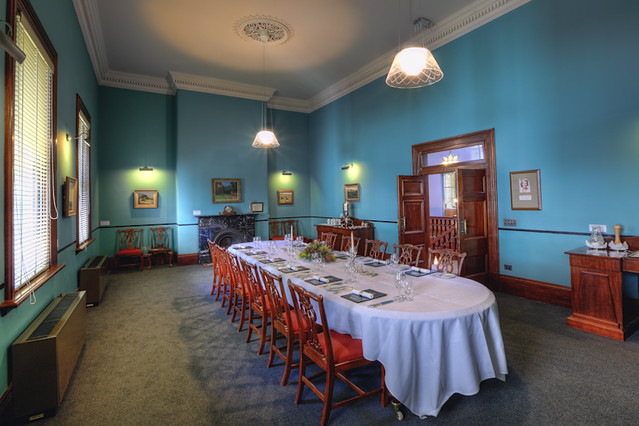
The Dining Room at Customs House
View Full Size
Details:
Camera: Canon EOS 5D Mk II
Lens: Canon EF 16-35mm f/2.8L II USM
Exposure: 3 exposures (-2,0,+2 EV)
Aperture: f/11
Focal Length: 16mm
ISO Speed: 100
Accessories: Manfrotto 190XB Tripod, Manfrotto 322RC2 Heavy Duty Grip Ball Head, Canon RC1 Wireless Remote
Date and Time: 1 October 2011 11.48am
Post Processing:
Imported into Lightroom
Exported to Photomatix
Tonemap generated HDR using detail enhancer option
Exported tonemapped image to CS5
Curves layer for contrast adjustment
Hue/Saturation layer
Selective Noise reduction layer
Selective Unsharp mask Crop tool
Re-imported back into Lightroom
Added keyword metadata
Exported as JPEG
From Wikipedia
Customs House is a building located on Queen Street by the Brisbane River in Brisbane, Queensland, Australia. It was originally used for the collection of customs duty and was both completed and opened in 1889, when Queensland was a British colony... Customs House is a Brisbane landmark known for its distinctive copper dome. The building was designed by Charles McLay of the Queensland Colonial Architect's Office... The building became redundant when port facilities moved to the Port of Brisbane at the mouth of the Brisbane River, resulting in its closure in April 1988. The building is now leased by the University of Queensland and was refurbished between 1991 and 1994, at a cost of A$7.5 million.
Tags
Architecture
Australia
Brisbane
Brisbane Open House Day 2011
Canon 5D Mark II
Canon EF 16-35mm f/2.8L II USM
Canon RC1 Wireless Remote
Chairs
Customs House
Fireplace
HDR
HDRI
Interior
Manfrotto 190XB Tripod
Manfrotto 322RC2 Heavy Duty Grip Ball Head
Marble
Queensland
Table
Victorian Free Classical Style
AU
canon eos 5d, brisbane queensland australia, colonial architect, canon rc1, canon ef, copper dome, port of brisbane, manfrotto 322rc2, university of queensland, brisbane river, canon eos, customs duty, grip ball, camera canon, mclay, queen street, 8l, noise reduction, saturation, open house
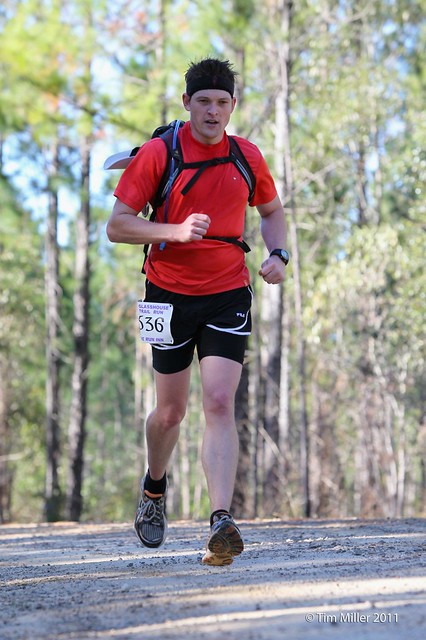
2011-09-10 TRAQ Glasshouse 100 213 536
Tags
Runners
running
dreamsport photography
dreamsport
TRAQ

DSC_3151
01-10-2011 - Monza - GT Open e CITE
Tags
monza
gt
open
cite
autodromo
foto
fotos
photo
photos
nikon
d300s
pietroz
 Richard Witt
Richard Witt
TODAY
CARDINALS (+11⁄2) over Giants: Big Blue backed up their pregame snarling by TKOing Michael Vick, leaving Mike Kafka overwhelmed. Disconcerted by effects of bizarre Seattle wind patterns, Cards have lost two close ones, and seek to rebound behind Kevin Kolb (blessed with knowledge of the NFC East), in tandem with all-world receiver Larry Fitzgerald.
RAVENS (-31⁄2) over Jets: Off loss to Silver and Black, and with Patriots up next in Foxborough, Gang Green needs this badly. But Joe Flacco’s confidence is sky-high, and this looms no garden party for The Sanchize, given center Nick Mangold’s nagging high right-ankle sprain.

AP
HEAD’S UP! Kevin Kolb (4) and the Cardinals have lost two close games in a row, including last week in Seattle, but look to rebound today at home vs. the Giants.
COWBOYS (-11⁄2) over Lions: Track meet looms, and matchup of Detroit front against bizarro-world Cowpoke offensive line translates into hours of sweat, but home-chalk price looks cheap.
JAGUARS (+7) over Saints: N’Awlins has rewarded the loyal with wins in last pair, but are now being asked to vault tall import on natural grass against unfamiliar AFC foe. Blaine Gabbert looked anything but slick against Panthers, but that game was a rain-soaked atrocity.
EAGLES (-81⁄2) over Niners: We would be shocked if Michael Vick didn’t start. Niners D presents Philly with matchup issues,
and red-zone offense remains chronic concern, but like other Eagles coaches, Andy Reid will have them focused off ugly loss as favorites.
Redskins (-11⁄2) over RAMS: St. Loo yielding almost 51⁄2 yards per carry, easing the task considerably for Redskins QB Rex Grossman.
Titans (+11⁄2) over BROWNS: Even with RB Peyton Hillis back, reluctant to rush to Cleveland off two straight wins, up against foe boasting multiple fundamental strengths. Even without WR Kenny Britt, QB Matt Hasselbeck enjoys variety of targets, and should find his way versus average host. Win one for Mike Heimerdinger!
BENGALS (+3) over Bills: Niners coach Jim Harbaugh made Cincy QB Andy Dalton look bad with Stanford student-athlete defenders, three seasons back when Dalton was at TCU. Expect better from Dalton, as Buffalo would rather outscore you than hunker down to defend. Bengals D familiar with ex-teammate Ryan Fitzpatrick.
CHIEFS (+11⁄2) over Vikings: This isn’t bulked-up Vikings D of recent memory, and given their second-half woes and red-zone issues, even sluggish Kansas City can see daylight.
Panthers (+61⁄2) over BEARS: Along with Mr. Gabbert, Cam the Icon was hindered by moist field conditions last week. Soldier Field turf could hamper Newton’s
best moves, but Jay Cutler is notorious for covering -3 or higher within friendly confines in just 15 percent of his league starts.
TEXAS (-4) over Steelers: Hate how this number has been played up — and Houston’s frequently disappointed when trying to close deal when favored. But this thing projects fast-and-loose, stylistically, which aids Texans coach Gary Kubiak’s cause.
Falcons (-41⁄2) over SEAHAWKS: Seattle survived under difficult wind conditions last week, and even with the return of WR Sidney Rice, QB Tarvaris Jackson largely looks lost in the pocket.
Dolphins (+7) over CHARGERS: Bolts didn’t allow Chiefs a first down in opening half, but were life-and-death to prevail! Miami continues to hang tough when dissed on the road, and Reggie Bush has points to prove in today’s locale.
PACKERS (-121⁄2) over Broncos: Ex-Bear Kyle Orton’s familiar with this nicked-up foe, but Broncos have difficult history in Lambeau, and Pack’s clearly in peak offensive form.
Patriots (-41⁄2) over RAIDERS: Speaking of guys who spit fire after losses: 1. Bill Belichck, and 2. Tom Brady. Close call at the number, because you hate to lay more than four on the road with a defense this wormy, and Oakland ran over coach Rex Ryan’s Jets like no one has ground them up during Ryan’s reign.
TOMORROW
BUCS (-10) over Colts: This will be coach Raheem Morris’ first try laying double digits with the Buccaneers. With Kerry Collins apparently concussed, Curtis Painter may face another trial by fire, and his NFL resume is a study in misery.
LAST WEEK: 11-5
SEASON: 23-20-4
kevin kolb, nick mangold, rex grossman, blaine gabbert, matt hasselbeck, michael vick, larry fitzgerald, nfc east, natural grass, fundamental strengths, world receiver, zone offense, rsquo, gang green, wind patterns, joe flacco, andy reid, ankle sprain, niners, pregame